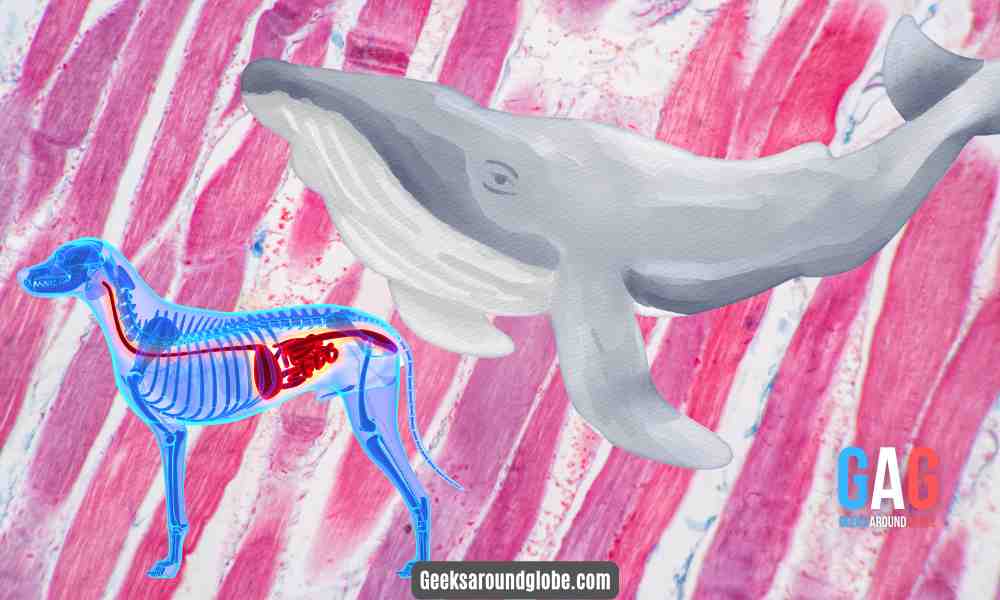- 1. 1. The importance of the backbone
- 2. 2. Respiration differences between fish and mammals
- 3. 3. Skeletal structures in fish and mammals
- 4. 4. Muscular structures in fish and mammals
- 5. 5. Nervous systems of fish and mammals
- 6. 6. How fish and mammals reproduce
- 7. 7. External features of fish and mammals
- 8. 8. The importance of studying fish and mammal anatomy
The study of anatomy has long been a cornerstone of medical research and education. Whether you are a healthcare professional, student, or simply have an interest in biology, understanding the intricacies of the human body can be a fascinating and rewarding endeavor. While humans may be the ultimate focus when it comes to anatomy, our understanding of the body has been greatly enhanced by studying other organisms, particularly those that share certain anatomical similarities with us. Fish and mammals, for example, share many similarities in their anatomy despite evolving separately for millions of years. These similarities can provide valuable insight into the evolution of all vertebrates, including humans. At the same time, understanding the differences between fish and mammals can help us appreciate the unique adaptations that different species have evolved to suit their environments. In this article, we will explore the similarities and differences in anatomy between fish and mammals, and through comparative anatomy, investigate how these insights can help us better understand the evolution of life on Earth.
1. The importance of the backbone
The backbone, also known as the vertebral column, is an essential component of vertebrate anatomy – from fish to mammals. It is composed of a series of individual bones, called vertebrae, that are stacked in a column to form the backbone. The primary function of the backbone is to provide support for the body and to protect the spinal cord, a key component of the nervous system. Additionally, the backbone plays a critical role in enabling movement and flexibility, as it serves as an attachment site for various muscles, tendons, and ligaments. The variation of the backbone across different vertebrates reflects their different lifestyles and adaptations; for example, the backbone of a fish is generally simpler and more flexible compared to the backbone of a mammal.
2. Respiration differences between fish and mammals
Fish use a specialized system called gills to extract oxygen from water, while mammals utilize lungs to breathe air. These gills consist of thin filaments that are rich in blood vessels, allowing for efficient gas exchange between oxygen and carbon dioxide. In contrast, mammalian lungs have a more complex structure and are divided into smaller and more intricate sections called alveoli, which provide a larger surface area for gas exchange. Furthermore, fish have an evolutionary adaptation called a countercurrent exchange, which allows them to extract oxygen more efficiently from water. Despite these differences, the ultimate goal of respiration remains the same in both fish and mammals – to extract oxygen and eliminate carbon dioxide from the body to maintain normal cellular function.
3. Skeletal structures in fish and mammals
Fish and mammals are both types of vertebrates, meaning they have an internal support system made up of bones or cartilage. However, the specific skeletal structures found in these two groups of animals differ in important ways. One key difference is the presence of a swim bladder in fish, which helps them control their buoyancy in water. This structure is absent in mammals, whose bones are adapted to life on land. Additionally, fish have a relatively simple skeletal system with fewer bones, while mammals typically have a more complex system with many more bones. For example, fish have hundreds of tiny bones called vertebrae that make up their spine, while mammals’ vertebrae are larger and fewer in number.
4. Muscular structures in fish and mammals
Fish muscles are arranged in a series of blocks or sheets, with each block or sheet containing multiple muscle fibers. These muscle fibers are aligned parallel to each other, allowing for greater power generation during swimming. Mammals, on the other hand, have a much more complex muscular system with distinct muscles that are anatomically separated from one another. Mammalian muscles are also organized into distinct groups, such as flexors and extensors, which allow for precise control of movement.
5. Nervous systems of fish and mammals
Fish and mammals have similar nervous systems that integrate various functions to coordinate behaviors and maintain homeostasis. However, mammalian nervous systems are usually more complex and have evolved to meet the demands of a more diverse and adaptable environment. Differences in the structure and function of nervous systems between fish and mammals can be seen in areas such as brain anatomy, sensory processing, and motor control.
6. How fish and mammals reproduce
Fish can reproduce both sexually and asexually, but the most common method is sexual reproduction. In this process, a male releases sperm into the water, and the female releases eggs. The eggs are then fertilized by the sperm, and the offspring develop outside the mother’s body. Mammals, on the other hand, reproduce only sexually. The female produces eggs, and the male produces sperm to fertilize them. The fertilized egg then develops inside the female’s body, and the offspring are born as live young after a specified gestation period.
7. External features of fish and mammals
Fish are known for their streamlined, scale-covered body that is perfectly adapted for swimming in water. They usually have a pair of fins, dorsal and anal, that help them in maintaining balance and steering direction, along with pelvic and pectoral fins for propelling themselves through the water. On the other hand, mammals have skin covered with hair, providing insulation and warmth from the external environment. They have limbs, which may be adapted for movement on land or water, and there are features like claws, hooves, and nails to help them grasp or manipulate objects. Depending on the mammal’s species, they may also have specialized features like flippers, wings, or a prehensile tail to help them in their specific environments.
8. The importance of studying fish and mammal anatomy
Studying the anatomical differences and similarities between these two types of creatures is crucial in gaining an understanding of how life developed on our planet. Fish and mammals share similarities in their organ systems and have many shared features, such as hearts, circulatory systems, and nervous systems. However, there are also significant differences in their anatomy, including the structure of their respiratory systems, skeletons, musculature, and reproductive organs. Knowledge gained from studying fish and mammal anatomy has wide-ranging applications, including medical research, conservation efforts, and even the design of underwater robotics.
In conclusion, studying the similarities and differences in anatomy across different species can provide valuable insight into the evolutionary relationships and adaptations of organisms. From fish to mammals, there are remarkable similarities in the basic structures of the body, such as the presence of a head, spine, and limbs, while there are also distinct differences, such as the complexity of the circulatory and respiratory systems. By understanding these similarities and differences, we can gain a deeper appreciation for the diversity of life on earth and the complex processes that have shaped it over millions of years.







